Japanese Wooden Weapons Craftsmanship, the Beginning of the End
Last January, I published an article on the future of wooden weapons craftsmanship in Japan.
After the closing of the Horinouchi workshop, which held about 40% of the production, the production capacity dropped and the situation quickly became critical.
Where are we one year later?
I will not go back on the reasons for the decline of the industry, I have already explained this in detail last year, so feel free to read "The Future of the Wooden Weapon Industry & 2020's price increase".
Restructuration & Production Capacity
First of all, since October 2019, all remaining 3 workshops tried to restructure their activity as quickly as possible, but with the complete impossibility to compensate for the loss of production capacity, the only solution was to increase prices and limit custom orders to focus on productivity.
The Nidome Brothers have always been overwhelmed. Since I met them in 2011, their production time has always been several months, with a monthly production of a few dozen pieces (for us) at best. With Horinouchi gone, they detain more or less 5% of the production.
Matsuzaki Father & Son were a little more productive, but they don't make much custom orders, they don't work much on Sunuke, and if we were able to revive the Katori Shinto Ryu Naginata with the help of master Matsuzaki, the production time is several months here too. Currently, they hold something around 5 to 10% of the production.
The Aramaki workshop, with something around 20 employees, holds 85 to 90% of the production. Their production time jumped from 2 weeks to 3 months despite the fact they now refuse all custom orders (except for length customization).
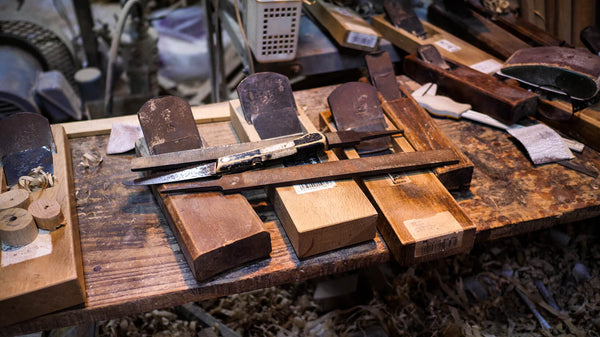
Traditional Tools in Nidome Workshop
The restructuring resulted in a significant price increase. One at the beginning of the year, because they couldn't manufacture Horinouchi's specialties at the same speed, they had to increase prices for those, by 30 to 100% depending on products. Then a second time in October 2020, for all standard/classic weapons (Bokken, Bo, Jo, Tanto, Shoto, etc.), by 20 to 80%.
I must stress the fact that from a Westerner perspective, seeing how craftsmanship is seen and appreciated in the West, Japanese products were widely underpriced and craftsmen underpaid. In my opinion, current prices on some items are still underestimated - And I do not hesitate to invite them to increase their prices as they see fit.
If the production capacity increased a little at the Aramaki workshop, Nidome and Matsuzaki were already above capacity, and in the end, the closing of the Horinouchi workshop has resulted in a durable drop in production, at least by a third. It is not going to get better. Not soon, not later, never.
Wood Shortage & Sustainability
The other major issue of the industry is the lack of good timber.
Let's say you plan to produce 1000 white oak weapons a year, and you need 10 years for your wood to dry correctly. If you have a 50% increase in orders, you need to find suitable wood for the other 500 pieces. Even if you have planned for a 10~20% possible variation, you're still left with 300 pieces worth of timber to find. You go on the market to see if you can purchase some that would be immediately ready to work, but it's more expensive than what you have in stock, and you might have to lower a little your expectations on quality too. Finally, your last solution is to start using the stock you panned for the next year.
The craftsmen have used all those stratagems to go through 2020. But something that wasn't expected was... the covid crisis. What do you think we sold the most during the crisis? What allowed us as Seido to survive? Yes, weapons. For a few months, we sold almost no textile, no Hakama, no Dogi. But the surge in sales for wooden weapons was enormous. Stable until May, from June to September, we sold more than twice more weapons than usual.
The result? Well, weapons that were produced in a rush with what was available, consuming timber stocks destined to the years to come.
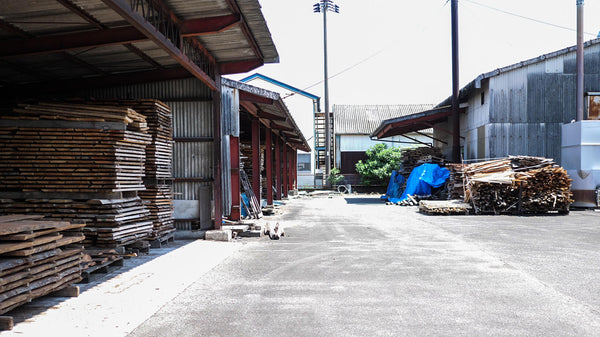
Stocks of wood in the Aramaki Workshop are getting frightfully low
It is now time to face the truth. Wood production in Japan is not sustainable, and we know it because... there's almost no quality wood left on the market. It's not the fault of wooden weapons makers, they channel only a very tiny part of the production, but they suffer the consequences as hard as everyone else. They cannot purchase the wood they need because there is no quality wood on the market, that's it.
Sunuke is almost gone. We will suspend orders for all Sunuke weapons in a few months, once the stock is completely depleted. There might be some resurgence in the following years as there are still some planks in the process of drying, but not much. And because the supply has been close to zero the past decade, it is, literally the beginning of the end.
Hon Biwa is almost gone too. All available wood for 2020 was gone in August. The next availability is for next summer, but similarly to Sunuke, it is the beginning of the end.
Worse, much worse, white oak is on the verge of disappearing. The quality started dropping significantly faster earlier this year, and if there will still be up and downs, we can expect white oak to become a "rare" wood in the next few years. Hon Akagashi, true red oak, has already gone through this process and cannot be used anymore for regular products.
Of course, as I mentioned in another article, the craftsmen went to the Ministry of Agriculture, Forestry and Fisheries to request assistance, to ask for authorizations to cut a few trees in some protected forests (with quotas and sustainable practices of course), just enough to ensure the survival of their craft. "No" is the only answer they received, "no", and no assistance whatsoever.
What do we do now?
I studied woodworking for a while when I was young. I love wood. I love wooden weapons too, I've been practicing weapons since I was 15, and if I'm certainly not a Kenshi, I appreciate good weapons as a tool for Budo practice and as a piece of craftsmanship. I love craftsmanship as a concept, and I very much appreciate the craftsmen we are working with.
I spent the past 15 months discussing those issues with everyone. Craftsmen, of course, partners and competitors, Budo and Koryu teachers and organizations, Budo researchers. In vain. Craftsmen are old and they do not have the energy of young entrepreneurs, they can't fight on their own, so I tried to bring some people to the table, but I can only face the sad truth: it very much seems like I am the only one who really has a desire to save this craft with absolutely no business consideration.
Unless a miracle happens, the best we can do is trying to slow down the process. They will disappear or almost disappear. It might take 2 years, 5 years, or very unlikely 10 years, but they will. How long it will take depends on how Budo equipment specialists (our industry) react and how we can help our customers to adapt to this new situation.

The Matsuzaki workshop is a good allegory to the state of the industry
Seido is lucky to have its own small workshop where we can resand weapons, revarnish them, apply our special finishes such as oil polish or wax, and it allowed us to keep the quality of our weapons to a reasonable level (reasonable enough to have received as much positive feedback as usual), but it won't last. We don't know for how long we will be able to keep the cost performance good enough for you, practitioners, but we will do our best for as long as possible.
Now, I imagine you would like to know what you can do?
- First of all, take care of your weapons, make sure you don't break them because of a lack of maintenance. They're precious. If you break a Bokken, try to make a Shoto or a Tanto with it, and don't buy what you don't need to buy.
- Second, try red oak (Ichiikashi, not Akagashi, available for all weapons on SeidoShop). It's the only wood for which the situation is still acceptable and sustainable.
- Third, and I know it's a shame, lower your expectations.
And that's it. There's not much you can do to help. It's very unlikely that you have a miraculous idea that none of us thought about, but if you do, feel free to comment on this post or drop us an email with your thoughts.
Seido's future?
We don't know. But we'll be there 'till the end.
I built Seido knowing that the industry was self-destroying, that the way it is organized can only lead to the disappearance of almost all craftsmen. The only workshops that will survive are the big ones, those that rationalize costs. Those that, as good as they are, I cannot define as craftsmanship.
Once all the small workshops, the old craftsmen, those who cherish the concept of craftsmanship as a way of self-accomplishment similar to Budo, will be gone, we'll follow them in the limbos of history.
Until then, please continue supporting them, and us. You've been amazing the past 10 years, and I really believe that, thanks to your support, we have been able to make a difference in the industry, to delay its complete failure a little, and bring comfort to craftsmen that were considered like expandable factory workers by too many.
Thank you very much!


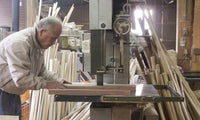
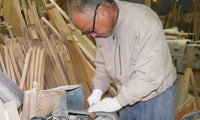
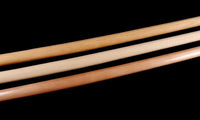
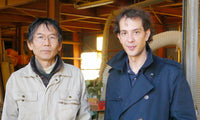
14 comments - Japanese Wooden Weapons Craftsmanship, the Beginning of the End
This post was definitely a wake up call as a practitioner and human being trying to create a sustainable future.
I can’t help but feel a negative outlook after reading about the workshop closures, and especially about the shortage of wood.
I hope that those workshops can preserve their production methods in books and videos so that their art does not die with them – it doesn’t have to be this way. Future generations can and will take up the mantle, even if production pauses for years.
While being realistic is important, and there is clearly a challenging circumstance facing the Budo weapons industry, I can’t help but wonder if this is not a great opportunity to evolve the art and production to suit the needs of our current world situation. I don’t know what this could look like – maybe the materials of our weapons change, maybe they become more expensive, maybe there are other efforts to restore or refurbish old supplies.
Throughout history humans adapt tradition to fit the needs of the time. Although traditional craftsmanship is well respected for its time tested knowledge, even those practices were adapted and evolved over time.
In conclusion while I don’t know the solution, I hope that together we can inspire eachother to come up with new innovative solutions to carry the practices of aikido and weapons training forward. We must first be good to our planet to be good to ourselves, so let’s see what creative solutions we can come up with, while still holding and carrying forward the torch of traditional art.
Hello!
I was watching the videos you made about the woodcraft artisans Seido works with, and I was wondering from which workshop do the 6 Shaku Bo comes from? (I just ordered one and I would like to know who will be in charge of making it)
The work you do to support this invaluable artisans and their craft is amazing!
Keep it up!
And so my girlfriend said “What, are you still bothering them? I hope you like what you ordered from them in hot pink”!
Encore, Touchez! Voila, je comprends.
Well, we’re off topic here.
It’s a complete different debate. What is Budo? What is Kobudo? What purpose does it serve?
Not a debate for this blog post anyway!
PS: Spears. The first weapon on the battlefield was the spear. A bit of Naginata, and some other long weapons depending on the era. And of course, matchlocks, lots of matchlocks!
PPS: Come train in Japan! I never trained in a Dojo having heated floors. Some of them have air conditioner, but… most of them don’t. Windows open. ~0°C in winter, 40°C in summer (and until recently, drinking during practice wasn’t allowed, but that changed… too high death counts for the Japanese ministry of education…)
But, I would add,if they did not fight with shinken, what did they fight with? And, in the spirit of Draeger, who trained in armor, how do you train powerfully on a flat, air-conditioned, heated floor? Combat training has ALWAYS required uneven terrain, uncomfortable conditions. Having read both Draeger, and Dave Lowry about Ryu skills training (of all types), leads to more questions, especially those about written documentation.
Ahhhhhh, Touchez!
It is quite unlikely that the Sekigahara battle was fought with Bokken, nor that Bokken were widely used (if at all) for combat at any point in time (except in Jidai Geki movies or in Musashi’s legends and stories)
The sword itself wasn’t widely used in combat either, as Shinken were expensive and fragile weapons.
Now, there are many differences between the old times and today.
There was much fewer concerns for security, which allowed the use of poor quality weapons for regular training.
There was virtually unlimited supplies and no concerns for cost.
There is almost no information left on how those Bokken were made, but given how few old
Bokken have been found, it is plausible that they were either not widely used or if so, not very highly regarded.
For instance, some old schools have documentations showing the use of tree branches for training.
The weapons we know today were “invented” early 20th century, and have followed an evolution process to fit modern needs.
Oh,,I would sooner varnish my gorgeous girlfriend, than one of your exquisite weapons!
Was not Sekigahara fought in the rain? Do not Warriors always train in conditions they might face? Bokkens have been used for centuries in combat, so I am confused by the “Theory”.I do know that while I question your historicity, I do not question your mission, and your undoubted sacrifices therein.
Hi John,
Well, in theory, wooden weapons are not really designed to be used outside.
In that case, I would recommend adding a thick layer of varnish to stabilize the wood. That will allow you to clean it fairly easily too.
I live in the Mojave Desert, here in Southern California. I often do ken/jo suburi in my backyard.Sometimes it is raining, sometimes even snowing. How do I do proper maintenance on my weapons afterwards? You purvey excellent weapons, I want to care for them, but I don’t want to miss time training.
The state of this situation is truly sad.
I find the Japanese government’s zero support for this wonderful craftsmen really incredible. Isn’t it understood that this profession represents an intangible cultural heritage, not only for Japan, but for the whole world? Or is it just an exclusive western perception? Really sad.
On the other hand, what Mr. Delage wrote is an important key: Taking care of and maintaining our weapons it’s the best we can do. We need to avoid losing them through negligence at all costs.
By chance, I took his advice beforehand: Not long ago one of my old Hokushin Itto Ryu bokuto broke, and through a local carpenter, I managed to obtain an excellent and balanced wakizashi out from this broken piece.
The time has certainly come to be creative and spare no effort.
Best regards and wishes for all the Team in these tough times.
Wow, this makes me regret all those cracked weapons. It is ironic to me, it will be soon easier to get a steel sword than a wooden one!